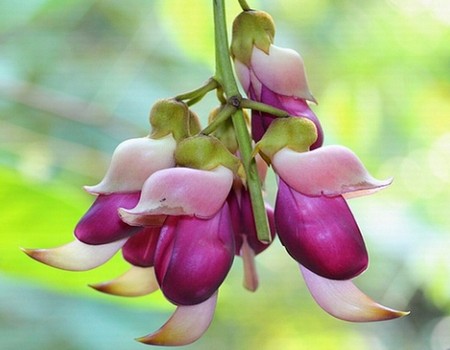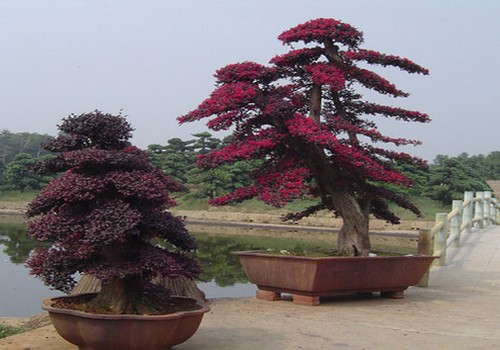The planting method of Fulukao in clusters
It has a long green period and a long flowering period, especially in early spring when it is in full bloom, which is like a colorful carpet. The blooming period in early spring is like a colorful carpet, which is very gorgeous and festival. in landscaping, it is suitable to plant felt flower beds and make use of its different colors to form decorative words or patterns. it can be planted in a large area on flat land or sloping land, can be suspended or used in rock garden, and can also be used as cut flower ingredients.

Clump Fulukao can be widely used in gardens, such as embellished in lawns or on the edge of green belts, planted in rock gaps, and mixed with flowers such as peacock grass, tulips, dwarf day lilies, etc. it can also be planted on the slope to beautify the slope and reduce soil erosion. It is another kind of landscape to hang it and watch it.
Transplant / basin:
Fu Lukao seedlings are not resistant to transplantation, so it is better to be early rather than late, and try to keep the roots of the seedlings intact. It is often transplanted to the pot within 4 weeks after emergence, and the variety "Palona" should use a small basin of about 10 years, as well as a pot medium with good drainage and loose ventilation.
Temperature adjustment:
The temperature of seedling emergence is high, which can be at 22 degrees. It is best to keep 18 ℃ at the initial stage of transplanting. Once the root system elongates, it can be reduced to about 15 ℃, so that it can blossom in about 9-10 weeks. Keeping a low temperature can form a good plant shape, and Flukao can withstand a low temperature of about 0 ℃, but its growth period is relatively long.
Management:
Fulu Kaoyi grows in a sunny and cool climate, so there is no need to use dwarf to control the shape of the plant. When the environmental conditions are not ideal, spraying 1 Mel twice can prevent overgrowth. In the process of cultivation, good plant row spacing must be maintained to prevent crowding and affecting plant shape and producing diseases and insect pests. The plant is short and the branches and leaves are hairy, so watering and fertilization should avoid contaminating the leaves to prevent the branches and leaves from rotting. The whole growth and development period is 14 weeks, which is related to the size of the basin, light conditions and seedling time.
There are still several problems that should be paid attention to in the practical application of the cluster test.
The main results are as follows: (1) when selecting and fixing seedlings in the project, we can not only select the large seedlings with good flowering effect at that time, because the clump Fulukao is not resistant to transplantation, and the larger plants are not easy to survive, so we should choose small seedlings to plant, and the landscape effect is good after growing for a period of time.
(2) Fulukao likes dry growing environment and avoid waterlogging. Site conditions should be fully considered in landscaping, and land preparation must be done well.
(3) it is suitable to be cultivated in the vast area north of the Yangtze River in China, and the adverse effects of humid and muggy summer weather on the growth of Fulukao should be considered in the Yangtze River basin and south of China.
In the dry season, the clump Fulukao is vulnerable to red spiders, and the symptom is that the leaves turn yellow, so chemical control should be carried out in time. It can be sprayed with 4000 times of the wettable powder of 5% butyrate and 20% paraben at an interval of one week, two or three times in a row.
Time: 2019-05-25 Click:
- Prev

Planting technique of Sparrow Flower
On the weekend since the beginning of spring, have seen the golden rape blossoms, photographed the pink cherry blossoms, plum blossoms and so on, do you think it is not strange to see more? If you want to be special, you might as well enjoy the sparrow flowers, which hang in the vines and are loved by everyone, which may be a spectacular spring light that can only be seen in Guangdong.
- Next

Grafting technique of Carthamus tinctorius
There are many kinds of grafting, and the commonly used methods are T-shaped bud grafting, square bud grafting, I-shaped bud grafting, sleeve bud grafting, groove bud grafting, xylem bud grafting and embedded bud grafting and so on. The affinity between Carthamus tinctorius and Euphorbia angustifolia is very strong, and grafting is often used to make bonsai and large-scale green seedlings.
Related
- Fuxing push coffee new agricultural production and marketing class: lack of small-scale processing plants
- Jujube rice field leisure farm deep ploughing Yilan for five years to create a space for organic food and play
- Nongyu Farm-A trial of organic papaya for brave women with advanced technology
- Four points for attention in the prevention and control of diseases and insect pests of edible fungi
- How to add nutrient solution to Edible Fungi
- Is there any good way to control edible fungus mites?
- Open Inoculation Technology of Edible Fungi
- Is there any clever way to use fertilizer for edible fungus in winter?
- What agents are used to kill the pathogens of edible fungi in the mushroom shed?
- Rapid drying of Edible Fungi

